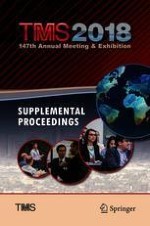2018 | OriginalPaper | Buchkapitel
Current State Art of Hot Thermocouple Technology—Novel Way for the Study of Mold Flux High-Temperature Properties
verfasst von : Lei Zhang, Wanlin Wang, Lejun Zhou
Erschienen in: TMS 2018 147th Annual Meeting & Exhibition Supplemental Proceedings
Aktivieren Sie unsere intelligente Suche, um passende Fachinhalte oder Patente zu finden.
Wählen Sie Textabschnitte aus um mit Künstlicher Intelligenz passenden Patente zu finden. powered by
Markieren Sie Textabschnitte, um KI-gestützt weitere passende Inhalte zu finden. powered by
